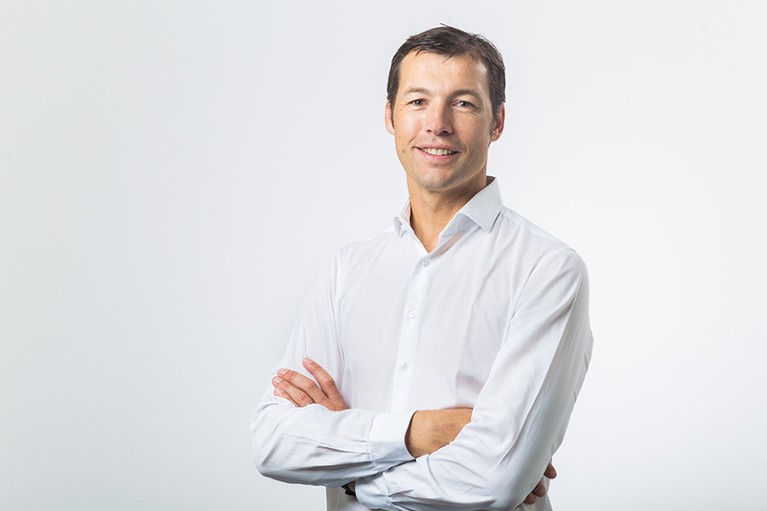
Mathieu Lefebvre works in Grenoble, France.Credit: Waga Energy
Mathieu Lefebvre is chief executive of Waga Energy, a company based in the Grenoble metropolitan area, France, that has developed a way to turn waste gas from landfill sites into grid-compliant biomethane. He says the city is perfectly placed to deliver the technical innovations needed for global energy transition and combating climate change.
What led you to look for ways to turn landfill gas into green energy?
Biomass is still the leading source of renewable energy worldwide. Biomethane recovered from biomass can be used as a substitute for conventional natural gas, and it is carbon-neutral because the emissions come from carbon dioxide originally removed from the atmosphere by plants. In 2007, I was working as a research engineer at Air Liquide, a French multinational industrial gas company, in Grenoble. We saw that biomethane had potential as a key pillar of the transition to clean energy, and so we started investigating how to produce it. We looked at using agricultural and food-industry waste, but found that the anaerobic digestion plants that we needed were too large and expensive. That led us to look at landfill sites, which produce methane-rich biogas from the natural degradation of organic matter, such as food waste, wood and used nappies.
What does your technology do?
Gas from solid-waste management generates around 5% of global greenhouse-gas emissions1. One tonne of methane has around 80 times the global warming effect of one tonne of CO2 over a 20-year period. In some parts of the world, landfill biogas is just released into the atmosphere. In the United States and Europe it is mostly captured and burned.
Our Wagabox landfill-gas recovery system collects gas from landfill sites, and then puts it through a series of chemical steps. We remove water and hydrogen sulfide, which comes from the organic matter. We compress the gas and use an adapted form of membrane filtration, a technique used in oil refineries, to separate out CO2 and pollutants. We then use cryogenic distillation to safely separate out the methane from oxygen and nitrogen.
We have 14 Wagabox units operating in France, and 15 more under construction, including 6 in Canada, the United States and Spain. We have added more than 50 million cubic metres of biomethane into the French energy grid and therefore avoided the release of the equivalent of more than 87,000 tonnes of CO2 in the past 5 years.
What is Grenoble like as a place to live and work?
It can be difficult to attract some people to Grenoble because Paris is the centre of economic activity. But, Grenoble is a professionally dynamic place with so many opportunities to work in the transition to cleaner energy, and there is so much innovation. When you are fully committed to your job, it is good to be able to recharge by being surrounded by nature. Perhaps it is especially valuable when you are working to protect the environment. I can leave my office and be in the forest in 10 minutes, or head up into the mountains to go walking, climbing, mountain biking, paragliding or skiing. The ability to regularly spend time in beautiful natural surroundings helps to remind us of what we are working hard to protect.


 Why France’s nuclear industry faces uncertainty
Why France’s nuclear industry faces uncertainty
 How France ramped up its capacity to innovate
How France ramped up its capacity to innovate
 Researchers sense apathy towards science in French presidential election campaign
Researchers sense apathy towards science in French presidential election campaign
 Science in France
Science in France
 How Grenoble has mastered industry–academia science collaborations
How Grenoble has mastered industry–academia science collaborations
 Medical research in the mountains
Medical research in the mountains








